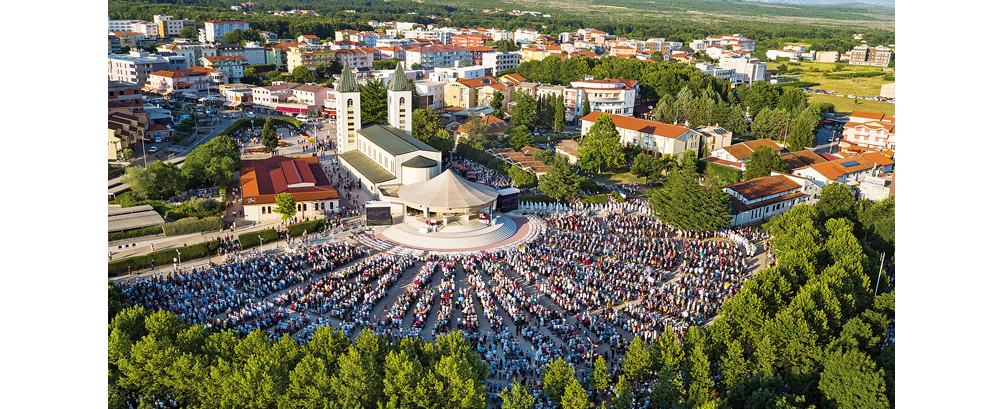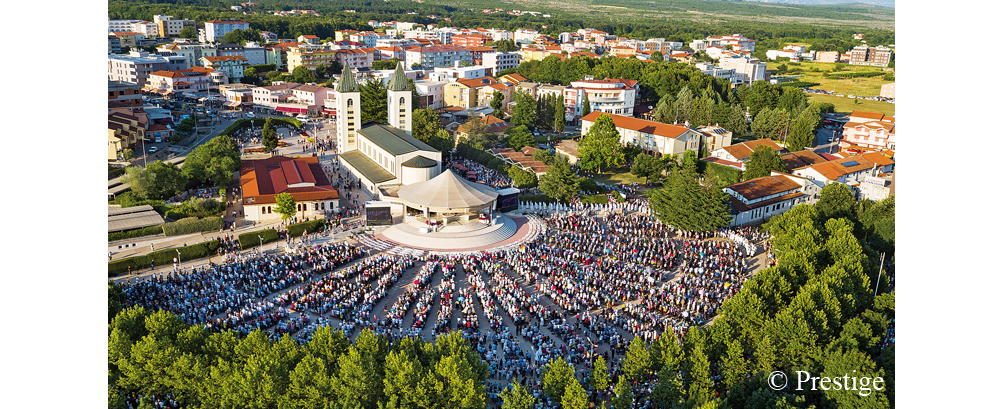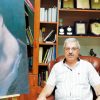Prestige issue 292, Oct-Nov. 2018
Travel by Mireille Bouabjian
On the Croatian border, south of Bosnia Herzegovina, a small village, Medjugorje, has become an international tourism and pilgrimage center. Since June 24, 1981, the date of the apparition of the Virgin Mary to six children of the parish, 20 million pilgrims visited this locality. The prosperity of religious tourism led to the construction of hotels, stalls, and restaurants all around the village. The Lebanese Association Friends of Mary Queen of Peace, founded by Sanaa Nassar and whose leaders are volunteers, in collaboration with Télé Lumière, have been organizing pilgrimages to Medjugorje for more than two decades, including one in the New Year, another at Easter, and a weekly pilgrimage between early May and early October. Prestige has accompanied the pilgrims in this place that deserves a visit. Pictures of the most striking sites.
Small village transformed into a big locality
During the course of history, Medjugorje has been marked by a permanent migration of its populations. Before the First World War, people went abroad because of extreme poverty. Between the two wars, they went to North and South America, because of Serbian hegemony and the persecutions of Yugoslavia. After the Second World War, the communist dictatorship caused massive emigration. Of Slavic origin, the name Medjugorje means the region between two mountains: Krizevac and Crnica, also called Podbrdo hill. At 200m of altitude, Medjugorje is a few kilometers from the Adriatic Sea. This little village had neither running water or telephone. Today, it is a city with a population of 5,000 inhabitants, and its hotel capacity amounts to more than 30,000 beds. The arrival of millions of pilgrims has contributed to the tourist prosperity of Medjugorje.
Beirut-Medjugorje
At Beirut airport, groups of pilgrims are formed, under the supervision of the guides. Aboard the Croatia Airlines, the airport of Mostar is the obligatory passage of our destination. A 45-minute bus ride remains to be made to reach the village, located 25km southwest of Mostar. A magnificent countryside panorama dotted with vineyards, and houses surrounded by greenery is offered to us. In a good-natured atmosphere, we arrive in Medjugorje, where an atmosphere of peace and serenity prevails with the cacophony reigning around the hotels.
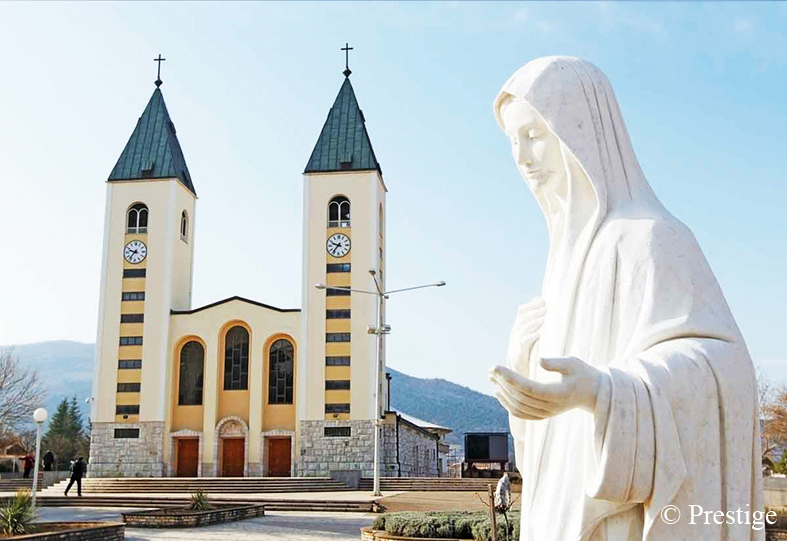
History of the apparitions
from the Virgin to the children
On June 24, 1981, at around 6 pm, six children: Ivanka Ivankovic, Mirjana Dragicevic, Vicka Ivankovic, Ivan Dragicevic, Ivan Ivankovic, and Milka Pavlovic see on Crnica Hill, a few hundred meters from Podbrdo, a young lady carrying a child, who asks them to approach her. Astonished and frightened, they did not do it. The next day, June 25, 1981, at the same time, four of them, Ivanka Ivankovic, Mirjana Dragicevic, Vicka Ivankovic, and Ivan Dragicevic are attracted to this place where they saw «our Lady», la Gospa or the Lady in Croatian. They are soon joined by Marija Pavlovic and Jacov Colo. That day, they prayed and dialogued with the Virgin, which is why the Apparition Festival is celebrated on June 25th. The group of witnesses from Medjugorje is formed.
The Saint-Jacques church
The parish of Franciscans was founded in 1892, and placed under the protection of St. James, patron saint of pilgrims. After the Second World War, the inhabitants built the current church of St. James, with two bell towers, completed and consecrated on January 19, 1969. At the time, it aroused the astonishment of both the engineer and the inhabitants scarcely 500, who found it immense for them. In fact, everyone was unaware of its future destiny as a place of pilgrimage worldwide, welcoming more than 2 million visitors a year. Indeed, since June 24, 1981, the church yet so large, never empty.
The arrival of pilgrims prompted construction in 1989 of the outer altar behind the church. It hosts nearly 5,000 people seated during regular celebrations, and sometimes more than 100,000 young people at the Youth Festival. A white statue of Mary Queen of Peace sits on the forecourt of the Saint-Jacques church. Installed in 1987, the statue is made of marble and marks the first apparition of the Virgin.
At the end of August, the streets of Medjugorje swarmed with tourists from around the world. Lebanese first, but also Italians, Spaniards, Canadians, Americans and even Japanese … Behind the church of Saint-Jacques, stands the monument of Resucito. On the occasion of the Jubilee, in 2000, a competition allowed to choose this famous Cross of the risen Christ.
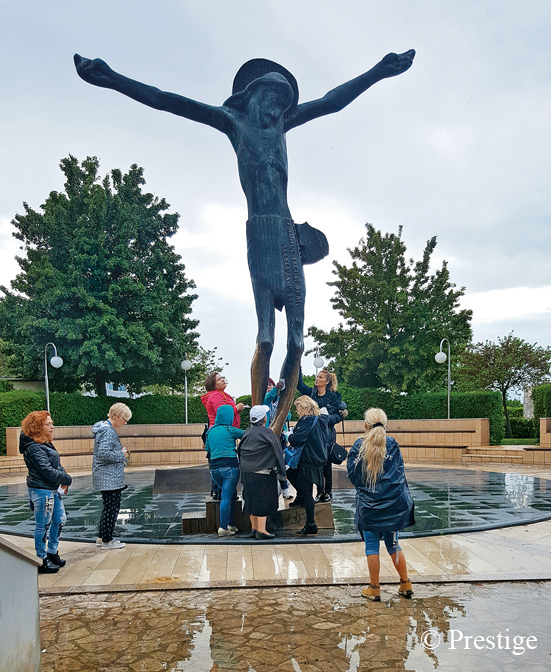
Father Slavko Barbaric 1946-2000
200m from the Resucito, the tomb of Father Slavko Barbaric, religious of the Franciscan order born on March 11, 1946, arouses our curiosity. He has been a spiritual father of pilgrims since 1982, he made high education in theology, a doctorate in spiritual pedagogy and psychological rehabilitation sessions. He has also written numerous articles and books on the spirituality of Medjugorje, translated into several languages. In 1988, the Vatican sent him to check the apparitions in Medjugorje. He remained there until his death on Friday, November 24, 2000, at half-past three in the afternoon, on the cross of Krizevac, after having completed the Way of the Cross with the pilgrims.
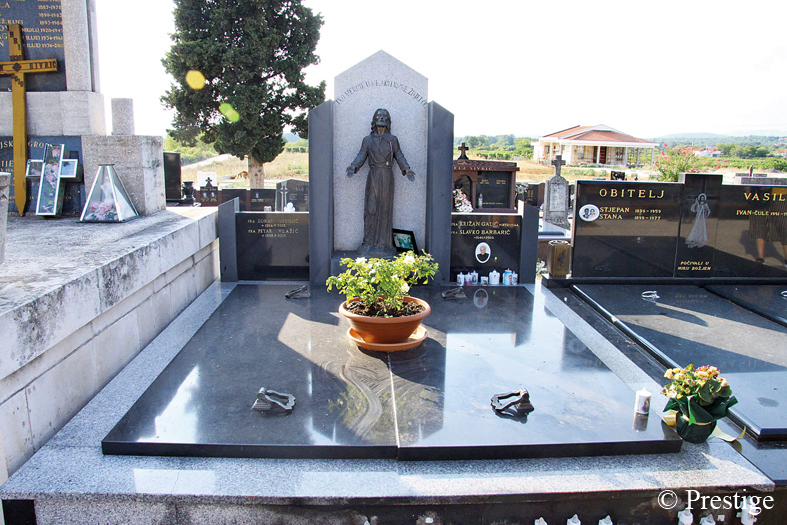
Podbrdo Hill and the Blue Cross
Apparitions Hill is the first visit of the Virgin in Bijakovici, a few meters from the region. The path is steep and rocky, traced by the steps of the millions of pilgrims who climbed it. A wooden cross recalls the place of the apparition of the Virgin. Believing that the apparitions constituted a danger to the security of the state, the communist regime pursued the witnesses. One day, as She appeared to them, the children gathered around Her to protect themselves. A blue cross has been added to this place.
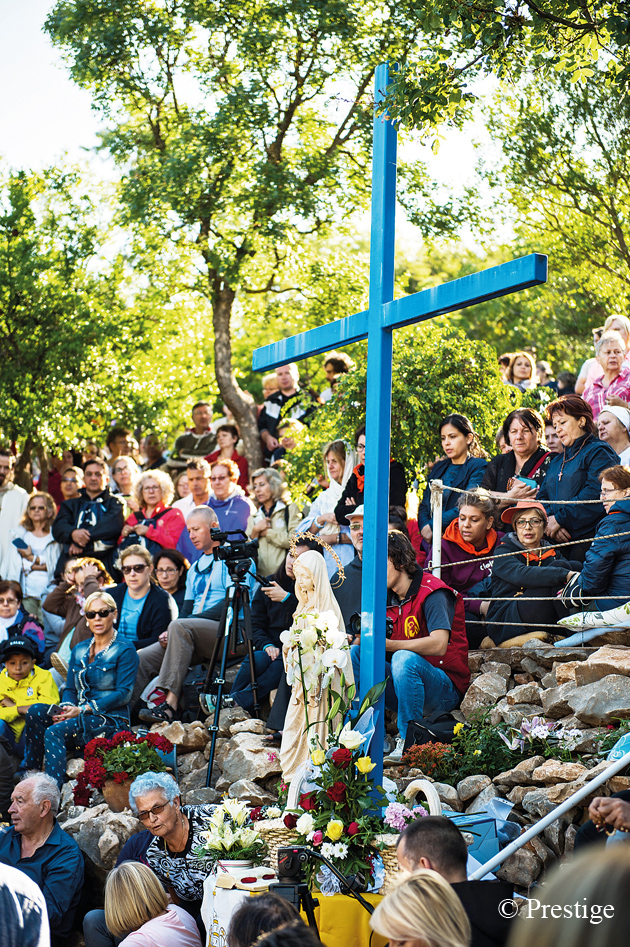
Cross at the top of Krizevac Hill
At 520m above sea level, the Mont de la Croix is 1km from the Saint-Jacques church. With Apparition Hill, the whole forms a triangle. In 1933, to commemorate the 1900th anniversary of the Crucifixion and the Resurrection of Christ in Jerusalem, the parish priest and the villagers erected at the top of Krizevac, a cross of reinforced concrete of 8.56m high, bearing the mention 33-1933, at the heart of which they placed blessed relics of the true Cross of Christ, brought especially from Rome.

Humac
Humac, 40 km from Medjugorje, is distinguished by the church of St. Anthony of Padua, built stone by stone by the inhabitants. On Sunday, the elderly brought the big stones and the children, the small ones. This gave the building a multiform appearance, reminding each of us that he or she is a constituent stone of the church. 10km from Medjugorje, a cool break in Kravice, with its marvelous waterfalls, made the happiness of all pilgrims.
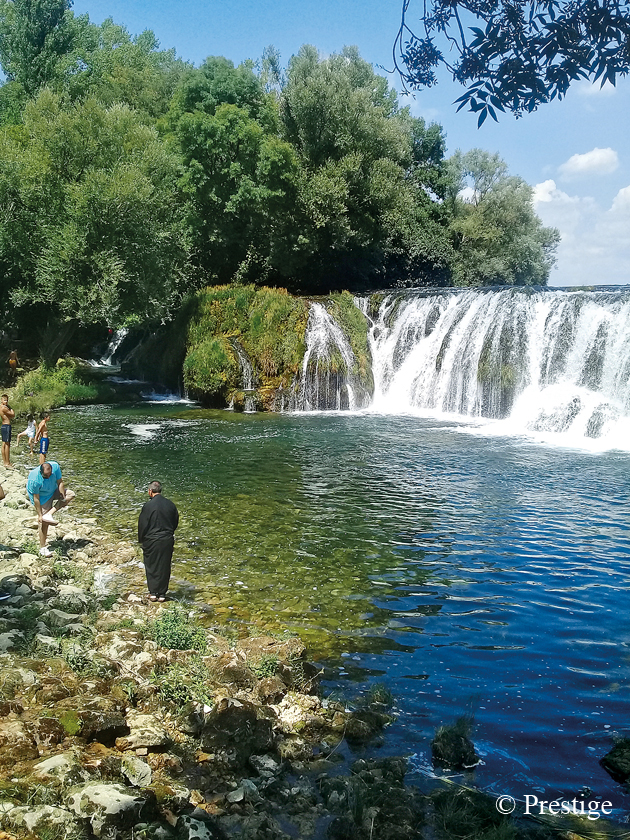
Tihaljina
The story of Tihaljina is also linked to that of its church, Saint-Elie. In the main square a statue of the Virgin in Carrara marble welcomes you, while inside, the statue of the Virgin of Tihaljina is the first symbol of the apparitions of Medjugorje, because of the response of the six seers to the question «Who does the Blessed Virgin look like?» When they exclaimed unanimously to their parish priest, Fr. Jozo Zovko: «She looks like the Virgin of Tihaljina!»

Franciscan Convent in Siroki Brieg
25km from Mostar, the economic and cultural capital of the Neretva, is the oldest Franciscan convent in Bosnia and Herzegovina, built in 1846. The church was destroyed and the first to be rebuilt. In 1905, the monks built a church dedicated to the Virgin and founded a public school and a museum that was set on fire in 1945. On February 8, 1945, 31 Franciscan monks and teachers were also killed and burned. Mostar was burned in 1992. The old bridge of Mostar is the emblem of the city. Built by the Ottomans in the XVIth century, it stands out for its Islamic architecture.
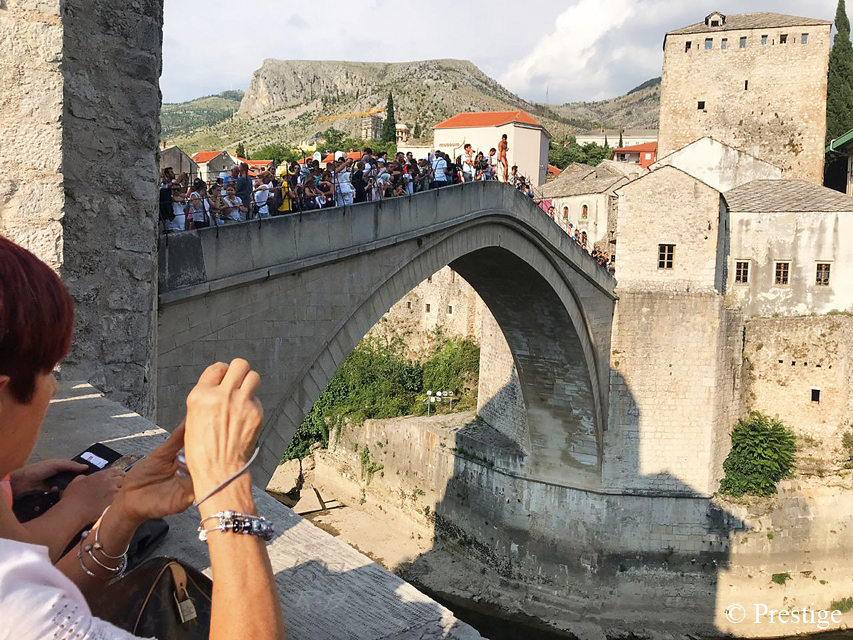
The Cenacle, Cenacolo
These are houses founded in Italy by Rita, born into a poor family of 10 children. At 19, she entered the convent to save young drunkards and drugs. Coming to Medjugorje in 1985, Rita, who became Sister Elvira, founded the Cenacle to welcome and rehabilitate drug addicts and people in distress of all countries, through prayer and work.


